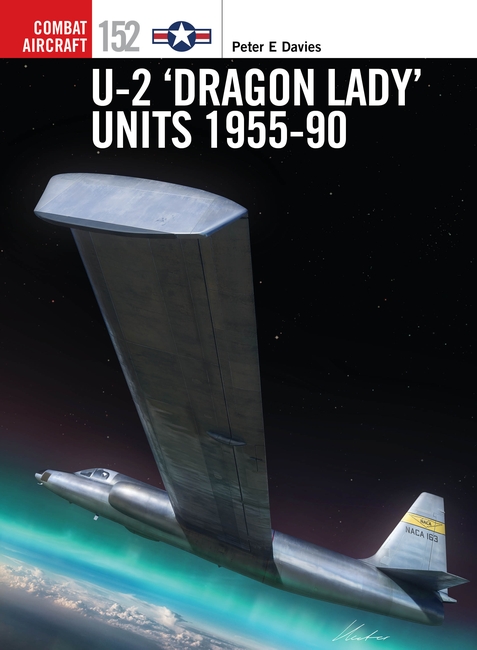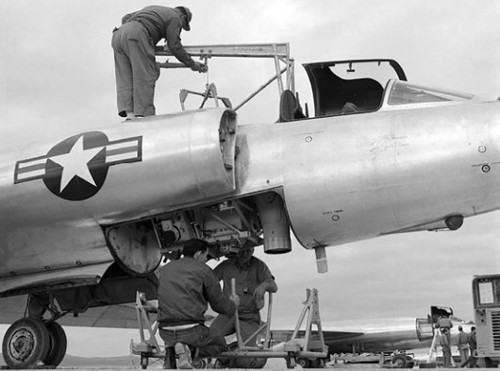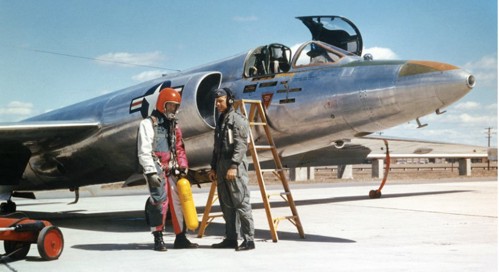
Welcome to Machine of the Month! Each month we'll be exploring a famous plane, ship or tank through an extract, blog post, fact file and artwork.
This month we're looking at Lockheed U-2.
Next month we'll be moving onto a ship feature.
We'd love to hear if you have any ideas for features you'd like to see.
Factfile
- The U-2 proposal originated in November 1953 as Project Bald Eagle, a CIA initiative for a new reconnaissance type which the initially sceptical USAF would eventually buy into. It was needed to fly over the Soviet Union and provide information that was severely lacking on its military and industrial resources.
- The intended payload was a 500-lb camera package and radar, infrared (IR) or other intelligence gathering systems which were being developed. Eventually, the aircraft would carry five types of cameras and more than 20 electronic intelligence (ELINT) gathering and self-protection devices.
- Eventually, the aircraft would carry five types of cameras and more than 20 electronic intelligence (ELINT) gathering and self-protection devices.
- It had to fly at Mach 0.8 for around 2400 miles, maintaining altitudes of 65,000–70,000 ft over ‘denied territory’, where the aircraft would be relatively safe from interception until around 1960, when it was estimated that adequate Soviet defences would have evolved.
- Several smaller companies including the Bell Aircraft Corporation, Fairchild Engine and Airplane Corporation and the Glenn L Martin Company were asked by the USAF to submit proposals for a better highaltitude design for Bald Eagle. Martin’s Model 294 (a big-winged B-57 bomber) was adopted as an interim measure, while Bell’s twin-engined X-16 was given a development contract. However, when John H Carter at Lockheed became aware of the project in the autumn of 1953, he suggested to company Vice-President L Eugene Root that it should submit an unsolicited Bald Eagle
- Lockheed’s chief designer, Clarence ‘Kelly’ Johnson, started work on the CL-282 (U-2) early in 1954. His legacy of radical, innovative designs included the P-38 Lightning, P-80 Shooting Star and Constellation. He also had a reputation for completing design projects in unusually short timescales.
- Johnson suggested using the fuselage of his current supersonic, lightweight F-104 Starfighter design and adding ‘wings like a tent’ in place of the F-104’s stubby, supersonic wings. The Starfighter’s elongated, cylindrical fuselage and small cockpit was adapted, and a General Electric (GE) J73-GE-3 turbojet fitted in place of the fighter’s GE J79. Its sideways-hinging cockpit canopy remained in all early U-2s, using the same part number as the F-104’s.
- The long, high aspect ratio wings were attached with three large bolts per side, like a glider’s, to enable easy disassembly for air transportation. They were also early examples of the ‘wet wing’, with each one containing two fuel compartments holding 1335 gallons in place of conventional tanks, feeding a single sump tank.
- Spanning 70 ft compared with the Bell X-16’s 115 ft, the wing included glider-style ‘gust control’, with deployment of the flaps and ailerons to set a nose-high angle of attack that reduced stress on the wings.
- The Starfighter’s distinctive ‘high-T’ tail was replaced by a lower-mounted version on a detachable tail unit.
- The structure was stressed to 2.5g – less than half the normal military standard. While this saved considerable weight, it made the airframe more vulnerable to aerodynamic stress than a normal design.
- Johnson eliminated an undercarriage, relying on two skids for landing and a wheeled dolly for take-off. He calculated that the 13,768-lb CL-282 would exceed the specified 70,000 ft altitude limit by 3000 ft.
- Its tactical radius of 1200 miles gave seven hours of endurance. Johnson implied that the aircraft could be available within a year, and he expected a short production run with a limited lifespan, pending the arrival of a faster, higher-flying reconnaissance vehicle.
- On 24 November Eisenhower approved the CL-282 design and the Land Panel’s suggestion that the aircraft should be flown by the CIA, not the USAF. Project supervision was given to Bissell by Dulles, with the comment that it was ‘too secret for him to explain’. Bissell was loaned a packet of classified CL-282 documents, while Johnson began a redesign that would result in a larger airframe stressed to 2.5g (like a transport aircraft) and inevitable delays for his original eight-month period up to first flight.
- Johnson learned that Pratt & Whitney could make a shorter, lighter, high-altitude J57-P-31A with its thrust increased to 11,200 lbs. Landing skids were replaced by a glider-style single main landing gear and a small metal and Teflon tail wheel. Two sprung steel ‘pogo’ legs with small wheels dropped away from the wings after take-off. Wingtips were protected from runway contact by abradable titanium skid buttons, lasting for around 100 landings. The large flying control surfaces were not boosted, causing work for the pilot but saving weight by omitting hydraulic systems. The wing structure used three spars and aluminium tubing lattice webs.
- Normal aviation fuel tended to evaporate through the fuel tank vents at high altitude due to low air pressure. Shell Oil produced a special low vapour pressure type of kerosene, based on products used for Flit fly-spray, known as LF-1A (‘lighter fuel’ to the pilots). It was replaced in USAF service by the ‘thermodynamically stable’ JP-TS.
- High-altitude flight also required a pressure suit to protect the pilot, whose blood would start to boil at 65,000 ft without cockpit pressurisation. Rather than inflict an inflated pressure suit on the pilot for an entire flight in an unpressurised cockpit, Lockheed pressurised the latter to an equivalent of 25,000–30,000 ft. The David Clark Company was asked to produce a suit that could be used uninflated for a 12-hour flight. If cockpit pressurisation was lost, the MC-3 partial pressure suit would inflate and protect the pilot for up to four hours.
- An ejection seat was eventually installed, but several failures occurred. The first successful ejection was not made until Col Jack Nole narrowly escaped from U-2 56-6694 when it suffered control failure at 53,000 ft on 26 September 1957.
- The prototype U-2A was completed on 15 July 1955.
- The completed aircraft, CIA Article 341, was disassembled and flown to ‘The Ranch’ in a C-124 Globemaster II. Reassembled and ground tested, the ‘Angel’ (Johnson’s preferred name for it) began taxi trials on 1 August 1955, when LeVier found that its considerable wing lift made the aircraft take off unexpectedly at 70 knots, even though he had cut the power. It flew for around 1500 ft and then LeVier had to manage the first landing, which involved a heavy bounce and a long skid that blew the main-gear tyres and burned the brakes.
- The first scheduled flight, with an interim J57-P-37 engine, on 4 August was a successful 20-minute workout of the basic handling until the landing. Following Johnson’s advice to touch down on the main gear, LeVier, under the CIA pseudonym ‘Anthony Evans’, found that the ‘Angel’, reluctant to stop flying, started a porpoising motion, forcing him to abort the landing. After several similar experiences he noticed an incoming thunderstorm and touched down in a stall, tail-first. With slight modification, this technique enabled U-2 pilots to return safely for decades to come.
- To reinforce secrecy, the aircraft became the ‘Utility-2’ or U-2, suggesting something as harmless as the Cessna U-3 light training aeroplane.

1)
U-2A 56-6708 of the 4080th SRW, Laughlin AFB, Texas, June 1957 Being an early J-57-powered U-2, this aircraft had smaller engine intakes and a clear lacquered natural metal finish. The latter’s reflectivity gave rise to many reports of ‘UFOs’ at altitudes far above commercial aircraft. 56-6708 became a U-2C in March 1966, only to then crash near Barksdale AFB on 1 July 1967 after wing failure due to excessive application of g-forces. Capt Samuel Swart successfully ejected.
2)
U-2F 56-6680 of the 4080th SRW, Bien Hoa (OL-20), South Vietnam, October 1964 This was one of three U-2s (56-6680, -6703 and -6707) converted for ELINT missions with ‘ram’s horn’ antennas above their rear fuselages. The projections acted as small aerofoils, and 56-6680 became so notorious for the ‘porpoising’ motions in flight that they caused it was known as ‘sick 80’. Moving one ‘horn’ fractionally helped. As a U-2E, it was the first such aircraft to be painted black overall. In 1975 56-6680 visited Britain for the ALSS project, having previously participated in the first Det A deployment in 1956 as NACA 187.
In Pictures

The A-3 high-resolution camera system, common in U-2As, on its transport trolley. Three vertically mounted HR-732 cameras, each with 24-inch focal length, could be operated singly or together. Each camera held enough film for 1200 9 x 18-inch exposures (NASA/Terry Panopalis Collection)

The bulky HR 73B Type B camera installation weighed more than 400 lbs. Hycon, with Perkin Elmer, produced thehand-built Type B cameras that gave high-definition horizon-to-horizon coverage (73.5 degrees left and right), with a weight-saving single 36-inch focal length lens and shutter designed by Dr James Baker. The pilot started the camera by selecting MODE 1 on a switch in the cockpit (Terry Panopalis Collection)

A U-2A-1 ‘hard nose’ sampler seen on 29 May 1962, with its pilot in an MC-3 partial pressure suit. For Operation Crowflight, these aircraft had a two-inch wide intake door in the tip of the nose that channelled particles for collection on four filter papers, rotated on a wheel (USAF/Terry Panopalis Collection)
You can read more in U-2 ‘Dragon Lady’ Units 1955–90

Comments
You must be logged in to comment on this post. Click here to log in.
Submit your comment